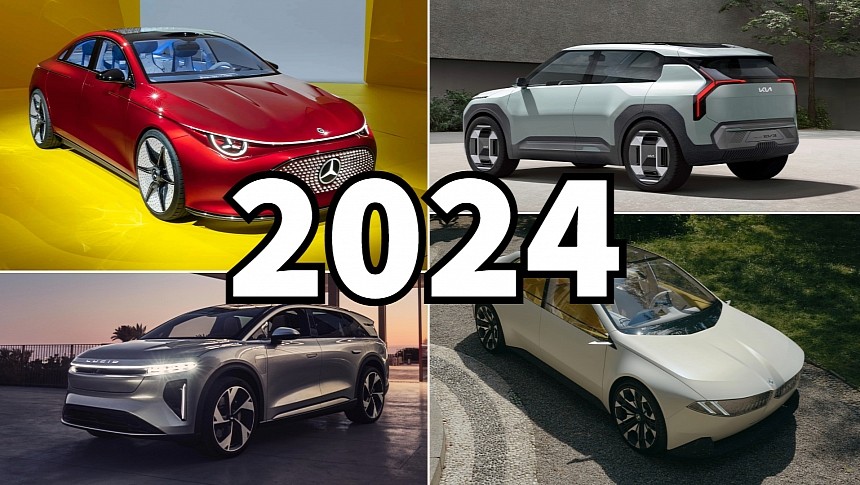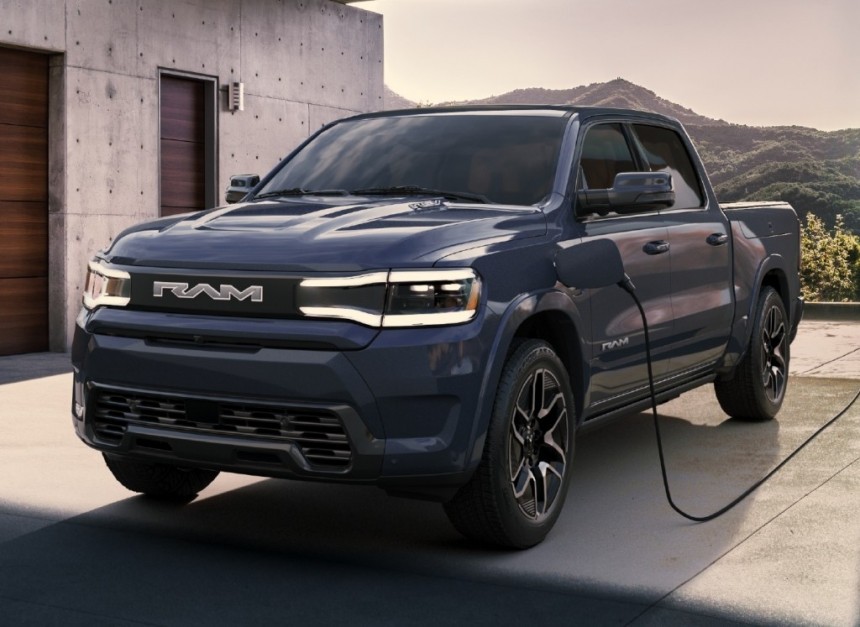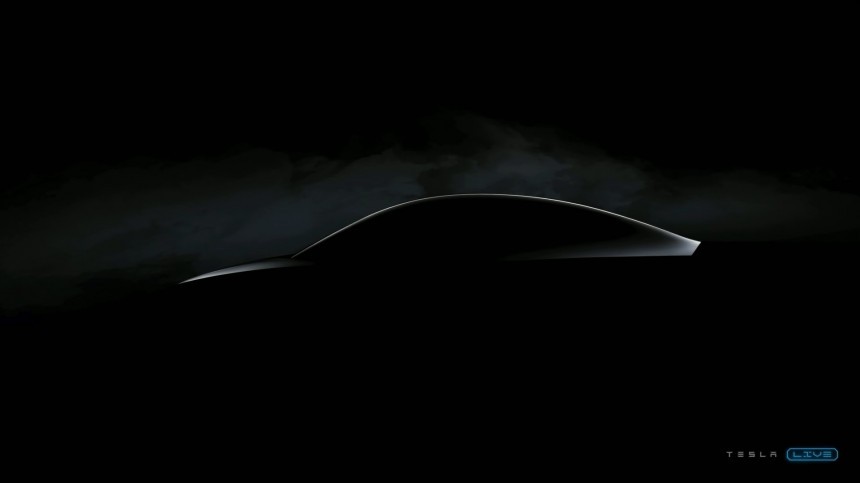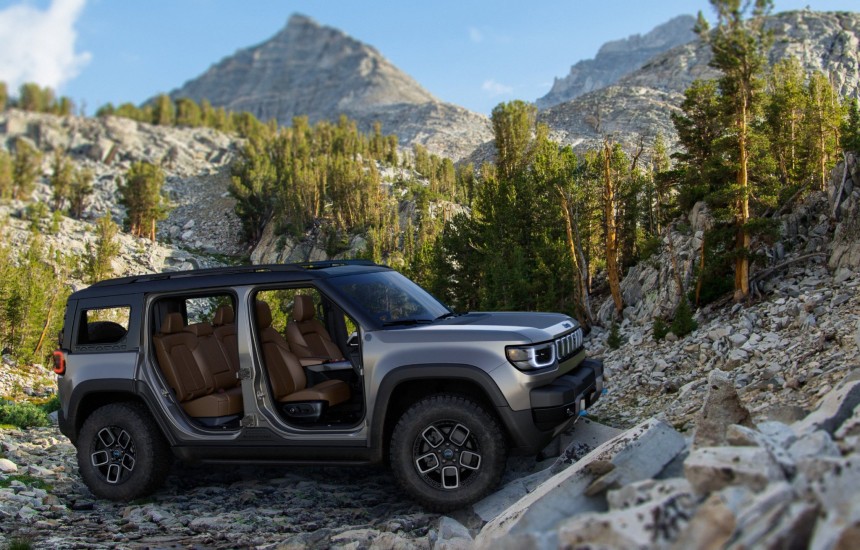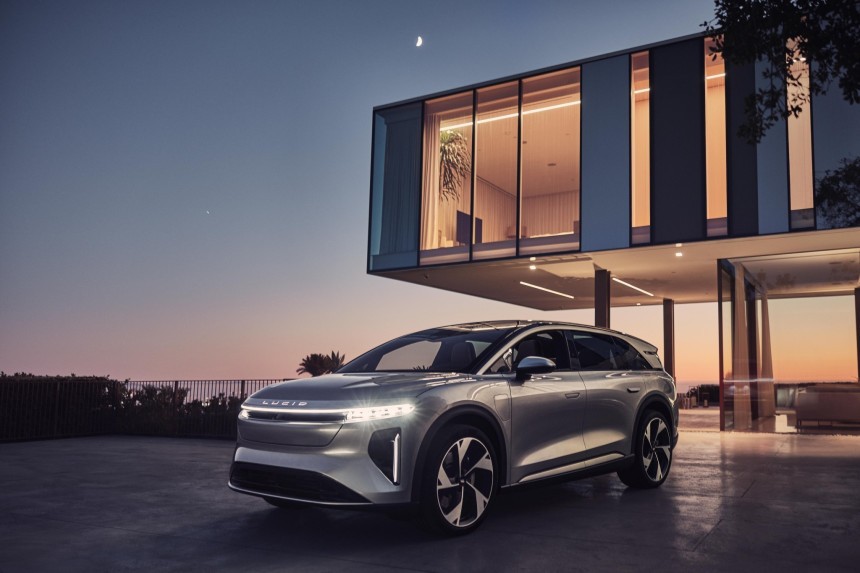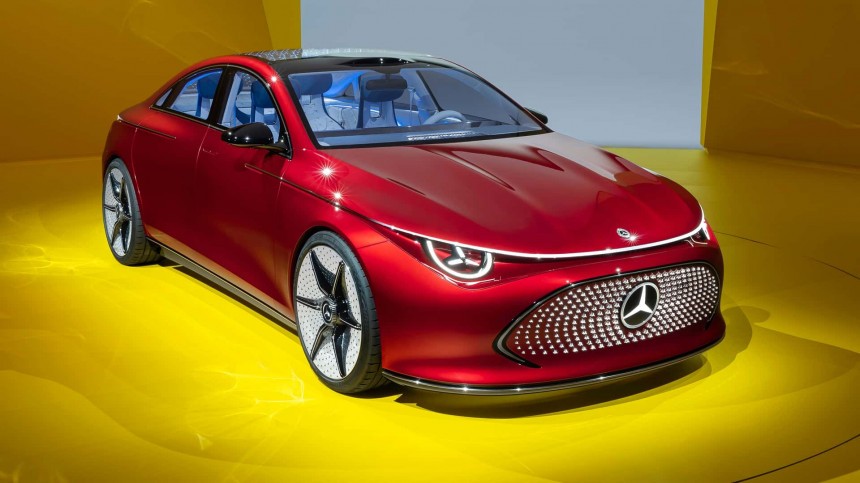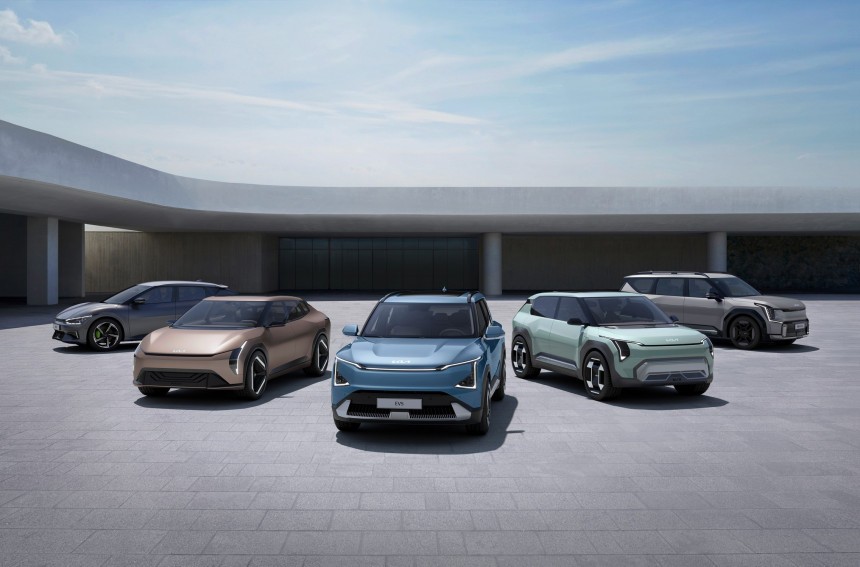A year ago, electric vehicles looked ready to take over the market. Carmakers left and right were preparing to launch dozens of new models while the prices finally started to drop, making EVs more affordable than ever. Still, the optimism has vanished in the last months of the year, and the perspectives for 2024 look less encouraging. Here's everything you should know about the EVs that will fight the ICE-mania in 2024.
It's rare to experience such a dramatic mood change as the one about electric vehicles in the past year. In January, hopes that electric cars will finally see price parity with comparable combustion vehicles were high. The government incentives of the Inflation Reduction Act were starting to show benefits for carmakers and EV buyers alike. Tesla also cut deep into the prices of its EVs, shocking the competition.
Everything looked good, especially as the supply chain difficulties from the past years finally subsided. The automotive industry pledged billions of dollars to EV and Li-ion battery manufacturing facilities, and dozens of new EV models were expected to enter the market. It looked like the American public, traditionally reluctant to consider electric vehicles, was finally warming up to the idea.
Indeed, the adoption of EVs accelerated quickly, with about 10% of all the passenger vehicles sold in the US this year being battery-powered. Compared to the Chinese and even the European market, this doesn't look like much. Still, considering the same percentage stood at 5.8% at the end of 2022, it's actually impressive. The downside is that not all carmakers managed to monetize this trend. The year ended pretty much as it started: the EV market is still a one-horse race, with Tesla selling more EVs in the US than all other carmakers combined.
This is why, despite ambitious plans announced earlier in the year, legacy carmakers like GM and Ford are not accelerating their plans. EV models that should have changed the market this year have been postponed, and battery plant projects have been scrapped. Meanwhile, Stellantis, the last to join the EV party in the US, has nothing to show aside from paper launches. This is the bleak picture that will set the stage for 2024, for better or worse.
The Cybertrucks are officially rolling off the production line in Austin, but Tesla still needs to ramp up production throughout 2024 to reach meaningful numbers. With over two million reservations, the Cybertruck looks on track to become the most wanted car model in history. I expect the stainless-steel electric pickup to put a strong mark on the automotive industry in 2024, with other carmakers adopting its groundbreaking technologies.
With the Cybertruck out the door, Tesla can finally focus on the design and development of its next-generation vehicles. The optimists think Tesla will show off the $25,000 compact EV and its first robotaxi in the first half of next year. I am not that sure Tesla will do that, even if the new platform is ready for prime time. Past experience showed that Tesla loves to announce its most important products toward the end of the year.
The next-generation vehicle will adopt the simplified unboxed-vehicle manufacturing process and will bring some of the Cybertrucks technologies into the mainstream. Elon Musk hinted that the $25,000 EV will adopt a similar stainless steel body shell, although I'm not sure this is wise from the cost-saving perspective.
Early rumors indicated that the next-gen model will be a shrunk Model Y, which makes sense. If it wants to cut the costs to the bottom, Tesla should start with something that it already produces at scale and make it even more efficient. Bringing new technologies would only raise the costs and make the $25,000 price threshold unattainable.
Tesla acknowledged that the Giga Mexico plans could not advance as fast as it wanted, so it decided to build the unboxed-vehicle prototype production line at Giga Texas instead. This revolutionary manufacturing process is paramount to reducing production costs in half compared with the Model 3/Y, a critical prerequisite to making the $25,000 EV a reality.
The Chevy Blazer EV, which looked like a worthy Tesla Model Y competitor when it was announced, proved a software fiasco in its first press reviews. Remarkably, journalists who were allowed to test it complained about software issues so grave that it sometimes made the EV inoperable. This shows that GM is no better than Volkswagen in the software department, despite bold ambitions to replace Apple CarPlay with "something better."
The problem with GM's EV program is that it depends on the Ultium platform becoming successful. Unfortunately, the Ultium battery cell yields have been disappointing so far, which ultimately doomed all EVs, with the notable exception of the now-defunct Bolt EV. It's intriguing that GM prioritized the Bolt production, considering that it said Ultium technology is much more cost-effective. And yet, the Bolt sold at rock-bottom prices.
Considering all this, it's unlikely that the affordable Chevy Equinox EV will ever sell for $30,000, as GM announced. Or that it will be produced in enough numbers to be taken seriously. Meanwhile, the GMC Sierra EV/Chevy Silverado EV duo is yet to prove it can compete in the electric pickup truck segment. Cadillac, with its comprehensive EV range, looks much better than other GM brands, but it also lacks the volumes to challenge Tesla's leadership.
Ford looked the most promising legacy carmaker in 2023, but its EV program also hit a wall. The F-150 Lightning demand evaporated in the past months, and the Mustang Mach-E is not doing better. Things are so bad that Ford cut F-150 Lightning production estimates in half for 2024. Meanwhile, the 2024 doesn't look any better from Ford's perspective, with no new electric model expected other than variations based on the existing lineup.
While Ford and GM vowed to surpass Tesla by flooding the market with affordable and compelling electric vehicles, Stellantis has been mostly quiet in 2023. Sure, we learned about the Ram 1500 REV, a couple of Jeep EVs, and the electric Dodge Charger, but none of them appear closer to production than they were a year ago. Stellantis also dismissed electric vehicles as a waning trend, and it looks like it is now waiting for it to go away. Well, it won't, and 2024 will prove it the hard way.
Based on a recent analysis from The Wall Street Journal, at least 18 EV and battery startups are projected to run out of cash by the end of 2024. Among them, Faraday Future, Canoo, and Fisker are the most likely to kick the bucket next year. Despite Elon Musk predicting their fall, Rivian and Lucid Motors are not in trouble, although this doesn't mean they're out of the woods yet. Both are planning important EV launches in 2024
Rivian is doing a great job ramping up R1 production, but the real challenge will be completing its second production facility in Georgia and launching the R2 models. The R2S will be a Tesla Model Y competitor with a healthy appetite for adventure, as expected from a Rivian EV. The EV startup has high hopes for the R2S, which should sell in large enough volumes to buoy the company to profitability.
Unlike Rivian, Lucid Motors is still far from reaching that point, which is why the Lucid Gravity SUV is equally essential for the company. Unfortunately, Lucid made the wrong bet by developing another expensive vehicle that has a slim chance of selling in significant numbers. The market is not in the mood for $100,000+ electric cars, as the lackluster Tesla Model S/X sales show. On the other hand, Lucid Motors has the backing of Saudi Arabia's Private Investment Fund (PIF), which owns more than 60% of the company.
2024 is finally the year the Porsche Macan EV and its twin Audi Q6 e-tron will start deliveries. Both EVs sharing the PPE architecture were delayed by software issues, even though the road tests were almost completed in 2022. Audi should also ready the A6 e-tron for a fight against the BMW i5, Mercedes-Benz EQE, and Tesla Model S. It should not be hard to make a splash on the market, considering that all Mercedes-Benz EQ EVs have failed to impress the buyers.
This is why the three-pointed star brand might abandon the EQ branding altogether. The move might happen as soon as 2024, starting with the first electric G-Wagen. The 2025 CLA EV, which will probably be unveiled in 2024, will also shed the EQ branding. Judging by the looks of the CLA concept showcased at the IAA 2023 auto show, this also means abandoning the bland design of the EQ models.
BMW is doing better, with a comprehensive EV lineup that customers seem to like. The recently launched BMW i5 will be joined in 2024 by the station wagon i5 Touring, although this will not make it stateside. The i5 has yet to prove its worth, but it looks like a solid alternative to the ICE 5 Series, with no effort spared to make it a bestseller.
In the meantime, BMW engineers are busy bringing the Neue Klasse EVs to market, starting with a 3 Series-sized model in 2025. This will be followed by an X3-sized crossover soon after, which makes more sense considering that sedans are less popular. Prototypes of both models have already been caught testing, which means we might see an official unveil toward the end of 2024, with production planned in early 2025.
However, both carmakers are set to start local EV production in the US next year, thus qualifying for the IRA tax credit. Kia will start US production of the EV9 in West Point, Georgia, while Hyundai is also building an EV factory in Savannah, Georgia. The latter was scheduled to open in 2025, but the latest rumors indicate that Hyundai has sped up work to start operations as soon as next year. The Korean carmaker intends to build up to six EV models in Savannah, with a planned output of 500,000 units per year.
Combined with the fact that few other EV models on the market will be IRA-compliant in 2024, local production in the US should level the playing field. This should offer the Hyundai Ioniq 7, which starts deliveries in early 2024, a better position in the market. Hyundai's take on the Kia EV9 seven-seater SUV will offer similar characteristics but opt for a more stylish design, reminiscent of the SEVEN concept from 2021.
Everything looked good, especially as the supply chain difficulties from the past years finally subsided. The automotive industry pledged billions of dollars to EV and Li-ion battery manufacturing facilities, and dozens of new EV models were expected to enter the market. It looked like the American public, traditionally reluctant to consider electric vehicles, was finally warming up to the idea.
Indeed, the adoption of EVs accelerated quickly, with about 10% of all the passenger vehicles sold in the US this year being battery-powered. Compared to the Chinese and even the European market, this doesn't look like much. Still, considering the same percentage stood at 5.8% at the end of 2022, it's actually impressive. The downside is that not all carmakers managed to monetize this trend. The year ended pretty much as it started: the EV market is still a one-horse race, with Tesla selling more EVs in the US than all other carmakers combined.
Tesla will continue to dominate the EV arena with the next-gen EVs
Although the Chinese carmakers are breathing down its neck, Tesla will continue to dominate the EV market with a commanding lead. This is why it earned an entire chapter all for itself in this roundup. BYD might be very close in EV sales and will likely surpass it in 2024, but the two companies have vastly different products that don't overlap.The Cybertrucks are officially rolling off the production line in Austin, but Tesla still needs to ramp up production throughout 2024 to reach meaningful numbers. With over two million reservations, the Cybertruck looks on track to become the most wanted car model in history. I expect the stainless-steel electric pickup to put a strong mark on the automotive industry in 2024, with other carmakers adopting its groundbreaking technologies.
With the Cybertruck out the door, Tesla can finally focus on the design and development of its next-generation vehicles. The optimists think Tesla will show off the $25,000 compact EV and its first robotaxi in the first half of next year. I am not that sure Tesla will do that, even if the new platform is ready for prime time. Past experience showed that Tesla loves to announce its most important products toward the end of the year.
The next-generation vehicle will adopt the simplified unboxed-vehicle manufacturing process and will bring some of the Cybertrucks technologies into the mainstream. Elon Musk hinted that the $25,000 EV will adopt a similar stainless steel body shell, although I'm not sure this is wise from the cost-saving perspective.
Tesla acknowledged that the Giga Mexico plans could not advance as fast as it wanted, so it decided to build the unboxed-vehicle prototype production line at Giga Texas instead. This revolutionary manufacturing process is paramount to reducing production costs in half compared with the Model 3/Y, a critical prerequisite to making the $25,000 EV a reality.
The Detroit Three face a moment of reckoning
There are few things more hilarious than GM's Mary Barra vowing to surpass Tesla "by mid-decade" while at the same time selling fewer and fewer EVs each quarter. The only electric model with reasonable volumes was the Chevrolet Bolt EV/EUV, and it was discontinued. Meanwhile, GM has a rock-solid EV program, but only on paper.The Chevy Blazer EV, which looked like a worthy Tesla Model Y competitor when it was announced, proved a software fiasco in its first press reviews. Remarkably, journalists who were allowed to test it complained about software issues so grave that it sometimes made the EV inoperable. This shows that GM is no better than Volkswagen in the software department, despite bold ambitions to replace Apple CarPlay with "something better."
The problem with GM's EV program is that it depends on the Ultium platform becoming successful. Unfortunately, the Ultium battery cell yields have been disappointing so far, which ultimately doomed all EVs, with the notable exception of the now-defunct Bolt EV. It's intriguing that GM prioritized the Bolt production, considering that it said Ultium technology is much more cost-effective. And yet, the Bolt sold at rock-bottom prices.
Ford looked the most promising legacy carmaker in 2023, but its EV program also hit a wall. The F-150 Lightning demand evaporated in the past months, and the Mustang Mach-E is not doing better. Things are so bad that Ford cut F-150 Lightning production estimates in half for 2024. Meanwhile, the 2024 doesn't look any better from Ford's perspective, with no new electric model expected other than variations based on the existing lineup.
While Ford and GM vowed to surpass Tesla by flooding the market with affordable and compelling electric vehicles, Stellantis has been mostly quiet in 2023. Sure, we learned about the Ram 1500 REV, a couple of Jeep EVs, and the electric Dodge Charger, but none of them appear closer to production than they were a year ago. Stellantis also dismissed electric vehicles as a waning trend, and it looks like it is now waiting for it to go away. Well, it won't, and 2024 will prove it the hard way.
Things are far from clear in the EV startup arena
Despite the auto industry entering a new growth era in 2023, EV startups have continued to suffer. As I predicted earlier this year, many of them might not last long. Deteriorating economic conditions in 2023 means that raising capital will be more difficult. The coffers of many small companies are emptying fast while they still burn through cash. Lordstown Motors already filed for bankruptcy this summer, and others might not be far from it.Rivian is doing a great job ramping up R1 production, but the real challenge will be completing its second production facility in Georgia and launching the R2 models. The R2S will be a Tesla Model Y competitor with a healthy appetite for adventure, as expected from a Rivian EV. The EV startup has high hopes for the R2S, which should sell in large enough volumes to buoy the company to profitability.
Unlike Rivian, Lucid Motors is still far from reaching that point, which is why the Lucid Gravity SUV is equally essential for the company. Unfortunately, Lucid made the wrong bet by developing another expensive vehicle that has a slim chance of selling in significant numbers. The market is not in the mood for $100,000+ electric cars, as the lackluster Tesla Model S/X sales show. On the other hand, Lucid Motors has the backing of Saudi Arabia's Private Investment Fund (PIF), which owns more than 60% of the company.
There are few bright spots on the German front
The German automotive industry is not faring much better than the US carmakers. Volkswagen Group's brands are still grappling with software issues that have delayed important launches like the Porsche Macan EV or the Audi A6 e-tron. Meanwhile, Mercedes-Benz is forced to heavily discount its electric vehicles to make them more attractive. BMW, on the other hand, is doing better on the EV front thanks to a well-thought-out EV strategy.This is why the three-pointed star brand might abandon the EQ branding altogether. The move might happen as soon as 2024, starting with the first electric G-Wagen. The 2025 CLA EV, which will probably be unveiled in 2024, will also shed the EQ branding. Judging by the looks of the CLA concept showcased at the IAA 2023 auto show, this also means abandoning the bland design of the EQ models.
BMW is doing better, with a comprehensive EV lineup that customers seem to like. The recently launched BMW i5 will be joined in 2024 by the station wagon i5 Touring, although this will not make it stateside. The i5 has yet to prove its worth, but it looks like a solid alternative to the ICE 5 Series, with no effort spared to make it a bestseller.
In the meantime, BMW engineers are busy bringing the Neue Klasse EVs to market, starting with a 3 Series-sized model in 2025. This will be followed by an X3-sized crossover soon after, which makes more sense considering that sedans are less popular. Prototypes of both models have already been caught testing, which means we might see an official unveil toward the end of 2024, with production planned in early 2025.
The Korean carmakers will be in a better position in 2024
Hyundai and Kia have been praised for their efforts in the EV arena, but 2023 wasn't their best year. Sales of their most popular models, the Hyundai Ioniq 5 and Kia EV6 have been affected because they were not on the list of eligible models for the IRA incentives. Both companies used a loophole in the regulation to access the $7,500 tax credit by leasing instead of selling the EVs, but the results could've been better.Combined with the fact that few other EV models on the market will be IRA-compliant in 2024, local production in the US should level the playing field. This should offer the Hyundai Ioniq 7, which starts deliveries in early 2024, a better position in the market. Hyundai's take on the Kia EV9 seven-seater SUV will offer similar characteristics but opt for a more stylish design, reminiscent of the SEVEN concept from 2021.
